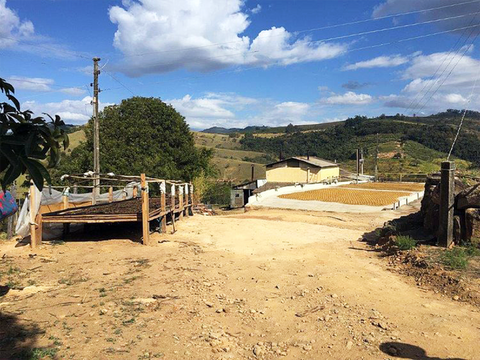The History and farm today
Los Lajones Estate is located on the slopes of Volcan Baru, Panama, at the elevation of 1750 – 2400 m.a.s.l. The total size of the farm is 160 hectares, with about 40 hectares dedicated to farming and the remaining 120 of forest.
Prior to being purchased by Graciano Cruz Sr and Jr (each of them own half), it was a cattle farm. In the first years after purchase, the lower parts of the property were slowly planted with coffee trees. Recently, the focus shifted to the upper parts, with Geisha, Catuai and Pacamara varieties being planted as high as 2100 m.a.s.l. One of the crucial aspects of Los Lajones is the zero water usage during coffee processing. All production is processed on-site using Honey and Natural methods and dried on raised African beds. Los Lajones has been an auction participant and winner for several years in a row (4th in 2021, 10th & 6th in 2020)
The farmer
This farm is owned by Graciano Cruz is a pioneering speciality coffee farmer from Panama who has championed the coffee movement through eco-friendly processing methods. His world-famous honey and natural coffees undergo waterless processing and are sun-dried on African beds on his farm. To this day, he never stops experimenting with different processing methods to increase the complexity in his coffee.
The climate
The unique geological characteristics of the property, which is located in-between two lava flows, created a completely different and specific microclimate. The rainy period is clearly defined, starting in May and lasting up to December. From January until April, the farm is constantly hit by wind currents coming from the Pacific Ocean, which collide with Bajareque (misty rain) arriving each afternoon from the Caribbean. This unique microclimate makes Los Lajones a perfectly dry spot for 5 months during the crop. The average annual rainfall is around 3500 mm of water, distributed into mild showers that take place predominantly from April until August. The rainiest months are usually September and October, averaging 1000 mm per month.
Biodiversity
Classified as a highland cloud forest, more than two-thirds of the property consists of primary forest with a high variety of oaks. The farm is divided according to the elevation into three different biodiversity zones and all the farm operations are carried out with environmental consciousness and deep desire to preserve the unique and exotic biodiversity of the whole area.
To develop a “Biodiversity farm inventory”, the farm collaborated with INBio (Biodiversity Institute of Costa Rica), which spent several days on-site, monitoring butterflies, macro mushrooms, birds and botanical inventory inside the coffee farm and within the transition zones with Volcán Barú Natural Reserve.


